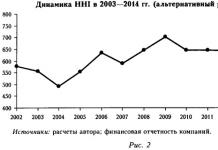If you want to decorate your plot, create an original hedge and at the same time harvest healthy fruits, pay attention to the Japanese quince.
Japanese quince is a low-growing ornamental shrub. She will decorate any garden in spring, when many huge (for its small stature) orange-red flowers with a diameter of up to 4 cm bloom on it, with which all the branches are strewn.
In summer, the plant attracts the eye with its glossy foliage and plumping fruits. In autumn it is strewn with small yellow fruits, resembling small apples.
Gardeners mainly plant low shrubs for decorative purposes. A group of 3-5 plants looks very good on lawns. A small quince bush will decorate a flower bed or alpine hill; it is often used in landscape design.
The bush blooms in May and, due to the uneven opening of the buds, bright flowering lasts for 2-3 weeks.
Spiraea, forsythia and mahonia will be worthy partners for her in garden compositions.
Quince has the ability to grow in breadth due to abundant root growth, and this is its quality very often used to strengthen slopes (it holds the soil).
You need to be careful with the bush, as some varieties have sharp thorns.
Chaenomeles (Japanese quince) due to its frost resistance (withstands frosts down to -25 ° well) suitable for growing in the Moscow region. At frosts below - 30°C, the buds may freeze, but the bush will not die.
When properly grown, the shrub can grow for up to 40 years.
Japanese quince, or chaenomeles:
Planting in open ground and care
Quince is not demanding in terms of growing conditions, but there are several conditions that must be taken into account when planting a seedling:
- The planting site should be sunny, since the shrub grows and blooms poorly in the shade;
- to avoid freezing of bushes in severe winters, plant in places protected from northern winds;
- soil acidity should not exceed 6.5pH (slightly acidic);
- Having a tap root that goes deep into the soil, the plant does not tolerate transplantation from place to place, so we plant it immediately and forever;
- the distance between bushes is 1-1.5 m, when forming a hedge 0.8-1 m.
Landing rules:
- pour about a bucket of humus with wood ash (0.5 kg) and superphosphate (0.3 kg) into it into a dug planting hole (60*60*50cm), mix with a shovel with a small amount of soil;
- We place the seedling in the hole so that the root collar is at soil level;
- cover the roots of the plant with soil and water well;
- It is advisable to mulch the soil around the bushes (sawdust, crushed tree bark, peat).
Further care of the young seedling consists of watering, but waterlogging of the soil should not be allowed to avoid rotting of the roots, regular loosening of the soil around the bushes.
Since all the necessary batteries were brought in during planting, then There is no need to feed the plant within two years after planting..
In the spring, after the snow melts, adult plants are fed with ammonium nitrate, approximately 20 g per bush. In summer, liquid organic fertilizers are given (diluted mullein or bird droppings). In the fall, superphosphate is added.
The plant is winter-hardy, but young seedlings in the Moscow region should be insulated for the winter in the first years after planting.
To do this, you can use spruce spruce branches or cover small plants with covering material (spandbond or lutrasil), place wooden or plastic boxes on top and sprinkle with fallen leaves.
Quince bears fruit annually, starting from the third year after planting.
Chaenomeles is a cross-pollinated plant., therefore, for better pollination and increased productivity, you need to plant 2-3 bushes nearby.
Features of planting Chaenomeles:
Methods for propagating Japanese quince for transplantation
There are several ways to propagate Japanese quince.
Seeds
Due to the fact that varietal qualities are not preserved during seed propagation, it is used when growing rootstocks with further regrafting.
Seeds collected from fruits in autumn are stored in damp sand at a temperature of about 0°C throughout the winter.(thus they undergo stratification).
Seeds are sown in planting containers in February - March, after 1.5 months they are planted in separate containers and at the end of May - beginning of June the seedlings are ready for planting in open ground.
Regular watering and fertilizing are carried out until autumn, for the winter, seedlings that have not yet fully matured are insulated with fallen leaves.
The easiest way is to immediately plant seeds collected in the fall in prepared rows, sprinkle with soil, cover with polyethylene and cover with leaves.
The germination rate of such seeds is excellent, since they have undergone natural stratification, in the spring the dense shoots need to be thinned out, leaving the strongest ones. By autumn, the seedlings are ready to be transplanted to a permanent place of growth.

Cuttings
In early June, green cuttings are carried out. Annual cuttings with a “heel” (a piece of last year’s wood) are cut. The sections are treated with “Kornevin” for better rooting and planted in a tree at an angle.
To maintain humidity, cover the plantings with plastic film. By autumn, the seedlings are ready to be transplanted to a permanent place, but it is better to do this in the spring.
You can cut mature cuttings in the fall and bury them under a bush. at a depth of 20-30 cm, making sure to mark the location.
Over the winter, callus forms at the ends of the cuttings and with the onset of spring, the cuttings are planted immediately in a permanent place.
Dividing the bush
The easiest way to reproduce. Shoots with a well-developed root system are separated from the mother bush (root shoot) and replanted.
Horizontal layering
Quince often grows creeping shoots, by digging which you can get seedlings for subsequent propagation.

Chaenomeles pruning rules
The shrub tolerates pruning very well, but most gardeners do not do it due to the thorniness of the plant, and in vain. Quince needs pruning to improve growth and crown formation for decorative purposes.
There are three types of pruning:
- Sanitary– in early spring, dry, frozen and broken branches are removed.
- Formative– they begin to do it from the age of 4, when the branches begin to branch. Shoots growing inside the bush and thickening it are cut out, excess root growth is removed, leaving no more than 2-3 young shoots annually in order to avoid strong growth of the bush in breadth. The shoots creeping along the ground are also removed; they take the food for themselves and thicken the bush.
- Rejuvenating– it is produced from the age of 8 years of the bush, when the annual growth becomes less than 10 cm. Thin and elongated shoots are removed, leaving the strongest 10-12 in the bush. When thinning, you need to remember that the most productive shoots are at the age of 3-4 years; branches that are older need to be removed.
To avoid the penetration of diseases into the plant, all cuts must be treated with garden varnish.

Pests and diseases
Chaenomeles is not damaged by pests and is highly resistant to diseases, but in cool and rainy summers diseases such as:
- leaf necrosis– the appearance of a gray coating along the edge of the leaf with further spread over the entire surface of the leaf, the leaves dry out;
- cercosporiosis– appears in the form of dark brown round spots that lighten over time;
- ramulariasis– formation of brown spots on the leaves.
To combat diseases, spraying shrubs with solutions of copper sulfate (10% concentration) or a solution of foundationazole (0.2% concentration) works effectively.
Varieties for growing in the Moscow region
Of the domestic varieties, the most common are:
- Fragrant– bush up to 1.2 m high, winter-hardy, fruit weight 50-60 g, with a pleasant aroma;
- Nikitskaya– early ripening, medium vigor, winter-hardy;
- Vitamin– winter-hardy, compact bush, bright yellow fruits weighing up to 100g;
- Muscat– large-fruited variety (fruits up to 200 g), self-pollinating, winter-hardy;
- Teplovskaya– a variety with late ripening and long-term storage of fruits.
The most famous foreign varieties:
- Gayardi– variety with large orange flowers;
- Malardi– magnificent pink flowers with a white border;
- Papel- an interesting variety with yellow flowers and a pink border along the edge of the petal.

Harvesting in autumn, storing fruits
Quince fruits are small, hard and sour in taste, but very aromatic. and with a high content of vitamin C. They are collected in September - October, before the onset of frost.
They are stored at an air temperature of 1-2°C for 2-3 months. As a result of resting, they become softer and their sweet aroma intensifies.
The easiest way is to cut the quince fruits into slices or grate them, sprinkle them with sugar in a 1:1 ratio and store them in the refrigerator. This preparation is used in preparing drinks and added to tea.
Preserves and jams are also prepared from Chaenomelis fruits and added to compotes. Sliced fruits quickly darken due to their high iron content.
Japanese quince. Northern lemon:
Making jam
For 1 kg of quince you need: 2 kg of sugar and 1.5 glasses of water. Wash the quince, dry it, remove the seeds and hard white membranes, cut into small slices.
Place the slices into boiling syrup, simmer over low heat for 10 minutes, skimming off the foam, then remove from heat and leave for 12 hours. Boil the jam again for 10 minutes, etc. until the quince slices become transparent.
Place the finished jam in sterilized jars and leave until winter. In winter, fragrant jam will remind you of the beauty of flowering bushes and the approaching warm summer.
Japanese quince is unpretentious to grow, it does not require attention and is easy to care for, but at the same time it is beautiful in flowering and useful in use.
Quince is a valuable fruit crop that belongs to the Rosaceae family, like the more famous representatives: apple and pear. Its fruits are widely used not only in the food industry, but also in medicine, for the treatment and prevention of certain diseases (for example, acute respiratory infections, bronchitis, diseases of the gastrointestinal tract, liver, skin, etc.).
General information
In addition, the quince tree also serves as a decorative decoration for gardens, country houses and personal plots.
The service life is about 70 years, while the fruiting period is 35-50 years. Already in the third year it will be possible to harvest (from 30 to 100 kg per tree). The fruits are stored in boxes in a dry, cool place (2-5°C).
Thus, the harvest harvested in the fall will remain until spring and will acquire more sweetness, softness and lose its astringent taste. Quince is grown both as a shrub and as a tree.

Quince varieties
There are five garden groups of quince: apple-shaped (the fruits are similar to apples), pear-shaped , Portuguese (pear-shaped ribbed shape), marble (has yellow and white spots on the surface of the leaves), pyramidal (due to the leaf shape).
As for varieties, there are a huge number of them, but the most famous and used are the following.
Quince "Aurora" – this variety ripens at the end of September. The fruits, when properly stored, last from two to four months. Suitable for long-term transportation. The fruits of this tree are used to make juices, compotes and jam.

Quince "Angerskaya" – collection is carried out in the first half of September, and stored for no more than three months. It is used rather for processing (preservation), since often the fruits fall off before they have fully ripened.

Quince “Angerskaya from Gorin” – they resemble an apple in shape, are heterogeneous in structure, and have solid particles. The shelf life of picked fruits does not exceed two months. There is a tendency for dark spots to form under the skin. Used for further processing into juices, jams, etc.

Quince "Buinakskaya large-fruited" has large fruits, each weighing 300-700 grams. The shape is pear-shaped, even more cylindrical. The shelf life is quite long. Since the taste of this variety is not pronounced, it is used as preserves.

Quince "Vraniska Denmark"
It has a late harvest, which falls at the end of October or beginning of November. The shape of the fruit is pear-shaped, rarely round (truncated). It has a sweet and sour pleasant taste. To consume it raw and enjoy the full range of taste buds, you should let the picked fruit sit for at least a month. For preservation it can be used immediately after collection.

Quince "Golden" has the shape of an apple. Harvest at the end of September and store no more than two months (sometimes less). The sweetish-sour taste is practically devoid of astringency, and the solid particles inherent in most types are practically absent. Used both raw and for processing.

Quince “Scythian Gold” – looks like an apple. Harvested at the end of September. The shelf life is quite long (up to three months). Subject to transportation. The pulp of the fruit is very tender and juicy, has a sweet and sour taste. The application is quite universal.

Quince "Golden Ball" the fruits are medium in size (about 300 grams) and have a sweet and sour taste. Good transportability and versatility in use.

Quince “Kaunchi-10 (winter)” ripens in early December and is stored for just over two months. It differs from other varieties in its pronounced aroma and crispy, sweet flesh. Most often they are consumed raw.

Quince “Late Maslyanka”
It differs from others in its miniature size (weighs only 50-60g). The color is yellow with a green tint. Not the most popular type for eating raw, as it has a sour and tart taste and solid particles in the pulp. Although very fragrant. They are used for technical processing, for example, they are very convenient for canning in their entirety.

Quince "Early Maslyanka" its characteristics are similar to the “late butterwort”, differing in its light yellow or rich yellow color.

Quince "Muscat" the fruit is medium-sized (weighing 200-250 g), round in shape (maybe slightly elongated). Used to make jam and compotes. For consumption raw, it has insufficient juiciness and a sour taste.

Quince "Skorospelka" has medium-sized fruits (up to 120g), astringent and sour taste. Suitable for recycling.

Or japonica – a heat-loving plant, so it is found in places with mild climates. In countries with cold winters (-30°C), even if the tree survives the frost, the buds and young shoots that are above the snow cover will die and the tree will not bloom in the spring.

Japanese quince cultivation and care
Let's look at the rules for caring for quince using the example of the Japanese Chaenomeles variety. Japanese quince responds well to light and therefore loves well-lit areas. It does not develop well in the shade, which will affect flowering.
All species and varieties of Chaenomeles feel great if they are located on light sandy loam, loamy and soddy-podzolic soils enriched with humus with a slightly acidic reaction (pH 6.5). They do not tolerate peaty soil well. Alkaline soil most often causes leaf chlorosis. The planting site is selected on the south side of the site, which must be protected from drafts and severe frosts.
Preparations begin in the fall. The planting area is cleared of weeds. If the soil is not fertile enough, then add a mixture of sand and leaf soil (1:2), in addition, peat manure compost is added at the rate of 10 kg per square meter, as well as phosphorus and potassium fertilizers - 40 g per square meter.
Planting quince
In the spring, in this area, with thawed and moist soil, you can safely plant Japanese quince for permanent residence, which has not yet had time to open its buds. Only those specimens that are at least two years old, and until then the plant is grown in containers.
During planting, the neck of the quince is placed above ground level, otherwise growth will slow down and the roots should not be exposed. This plant does not need transplants, so it is not worth moving from place to place, quince does not tolerate it well.
Trees (or shrubs) can be planted in groups, rows, along fences, like a hedge. The main thing is to maintain a distance of one meter in any direction.

Mulching quince
In summer, for lush flowering, it is necessary to loosen the soil and remove weeds around the bushes (trees), going 10-12 cm deep, and cover with a layer (3-5 cm) of sawdust, peat or crushed bark, in a word - mulch.
As for the quantity, the mulch should cover not only the perimeter around the rhizome, but be approximately the same diameter as the bush itself. It is best to do this in late spring. At this time, the soil is still sufficiently moist and has had time to warm up well.

Pruning quince in autumn scheme
The crown is not shortened much (by 1/3-1/4 of the length), otherwise this will cause increased growth of new shoots, which will delay the fruiting process. When thinning, all dry branches (down to healthy wood) that are too long and damaged are removed, and weak and old trees are pruned more heavily.
With the help of periodic pruning and fertilizing, constant vegetative growth can be maintained (rejuvenating effect), which contributes to a large annual harvest. During the first 5-6 years of growth of a young quince, this procedure must be carried out annually, and after that it depends on the condition of the tree.
The main pruning occurs at the beginning of spring. It is important to note that if young shoots are actively growing on a tree throughout the spring-autumn period, then in August they must be pinched, otherwise they will not have time to get stronger before the first frost and will disappear.
A garter is needed in the first years of active growth. This is due to the fact that quince does not grow evenly and will most likely need support. When the tree gets stronger and begins to bear fruit, then it will be possible to remove the supports.

Watering Japanese quince
Quince loves moisture, but you need to be careful and attentive, since this should not be frequent watering with a small amount of water, but about six waterings over the period from the beginning of spring to the end of autumn:
- 1st – in early spring, a few days before flowering;
- 2nd – during flowering;
- 3rd – after flowering stops, when the ovaries fall off;
- 4th – when young shoots begin to grow;
- 5th – a month after the previous one;
- 6th – when the fruits form and grow.
As for the amount of liquid, about 400 liters per tree should be used for a young tree, and 500-800 liters for an adult. The difference is related to the depth of the roots. In young people it is 50-80 cm, and in adults it is up to one meter.

How to feed quince in the fall
Fertilizers are applied throughout the entire quince growing season. At the beginning of spring, they are fed with mineral and organic fertilizers, in the summer there is a special need for nitrogen, phosphorus and potassium-containing nutrition (thereby increasing the yield), in the fall - with mineral and organic fertilizers (we make a supply of substances necessary for the quince to safely overwinter).
In the first year after planting quince in open ground, it does not need additional feeding. The amount that was already present in the soil before planting will be sufficient for the young plant to grow normally.

Quince harvest
Harvesting takes place at the end of autumn. Some fruits need to be kept on the tree longer, some need to be kept in boxes before consumption, this is when they acquire their special taste and aroma. It all depends on the variety; this nuance should be taken into account.
Before wintering, in order to avoid damage and frostbite, both young and adult shrubs must be sprinkled with old leaves and, if necessary, covered with a cardboard box.

Japanese quince propagation by seeds
Seed propagation is the easiest and most reliable way to grow Chaenomeles japonica. During processing of ripe fruits, the core is cleaned, the seeds are collected, dried and sown in the ground before the start of winter. The seeds germinate very well in the spring, although the quality of the soil is not important.

Propagation of quince by cuttings
Cuttings are harvested in early June, early in the morning, in dry and not hot weather. Each cut area should have at least two internodes and a piece of last year's wood (1 cm long).
To increase the survival rate (by 15-20%), growth stimulants are used (for example, “Kornevin”). The finished cuttings are planted at a slight angle in a substrate of sand and peat (3:1). By maintaining the temperature at 22-25°C, rooting is observed within a month and a half.

Reproduction of quince by root suckers
Japanese quince is capable of producing a lot of root shoots, which is why it tends to grow in width (an area of up to two meters). This helps to hold the soil when growing on slopes, but under normal conditions this is of no use. Therefore, you can use these offspring for reproduction.
To do this, dig under the bush and select shoots 12-15 cm long and no thinner than 0.5 cm, with a well-developed rhizome. No more than five shoots can be selected from one bush. They are planted vertically, constantly monitoring humidity (watered regularly), then mulched with humus, shavings or wood chips.
There is also a drawback to this method - some seedlings have an underdeveloped root system, so the first harvest will have fruits that are smaller in size and not as aromatic and juicy.

Diseases and pests
- If Various types of spots appear on quince leaves and fruits - this is most likely due to the fact that in damp and humid weather the plant can be affected by fungal diseases, which lead to necrosis, the leaves become deformed and dry out. For example, in the fight against brown spot (necrosis), spraying with a solution consisting of copper sulfate (100g) and water (10l) will help. There is also a safer option: steep a decoction of onion peels (150g/10l of water) for 24 hours.
- The ovaries die (fall off) – fungal infection. The mycelium can quietly overwinter in dried fruits and infected leaves, where brown spots appear, which, growing, cover the entire surface of the leaf blade, and during flowering, fungal spores get inside the young ovaries, destroying them.
Prevention of quince diseases
As you know, it is better to prevent diseases than to deal with their consequences, so the best treatment is prevention.
To do this, in late autumn, when the harvest has come to an end, it is necessary to collect dried fruits, broken and withered branches in order to avoid the death of ovaries, brown spots and leaf-mining moths.
As soon as the buds swell in the spring, but before flowering begins, the bushes are treated with a 0.1% solution of foundationazole and a 0.15% solution of dipterex. In the fight against rotting of the ovaries, spraying is carried out during flowering with a 0.08-0.1% solution of foundationazole.
If you follow all the recommendations for caring for quince, the harvest will be rich in aromatic and juicy fruits, from which you can make jelly, pastille, preserves, syrups, liqueurs, jams, compotes. From dried fruit slices you can prepare a delicious dried fruit compote. The most popular is making quince jam.

Quince jam is the most delicious recipe
Properly prepared jam retains all the beneficial qualities, as well as the taste and aroma of the fruit.
Ingredients
- Quinces – 1 kg
- Lemon - 1 pc.
- Sugar - 1 kg (less can be done, depending on who likes what, next time you can adjust)
- 200-300 ml – water
Preparation
Let's move on to cooking. Wash the fruits thoroughly. Peel and core (seeds can be dried for future planting). Cut into small pieces (it’s better to cut in half and then into slices), put in a bowl and put on the stove.
Cook for 10 minutes, then, stirring, gradually add sugar and cook for another 15-20 minutes. Remove from the stove and let cool completely. Then put it back on the stove and cook for another five minutes. Everything is very simple and so delicious.
Almost every owner of a garden plot wants his garden to be not only beautiful, but also unusual. That is why gardeners have recently begun to grow on their plots not only the familiar apple and pear trees, but also exotic plants. These include an incredibly beautiful shrub called Japanese Quince or Chaenomeles.
This unusual tree, bewitching with its incredible beauty and aroma, will not leave anyone indifferent during flowering. Despite the fact that Japanese quince is an exotic plant, it takes root well and grows in many regions of our country. Even inexperienced gardeners can cope with planting and growing Chaenomeles.
Japanese quince: photo, description, characteristics
Chaenomeles is an ornamental and fruit crop, is a heat-loving plant and grows well in regions with a mild climate. A quince tree can grow up to three meters, and a bush - up to a meter.
The plant is different:
By the end of September, beginning of October, the fruits of Chaenomeles ripen. When mature they can be bright orange or green-yellow color. The outside of the fruit is covered with a waxy coating, which perfectly protects them from spoilage. That is why they can survive even mild frosts on the tree. About half the volume of the fruit is occupied by brown seeds, which in appearance resemble apple tree seeds.
Japanese quince begins to bear fruit in the third year of life. From each bush you can collect from two kilograms of fruit. The fruits, even if they are not yet ripe, are collected before frost. They can ripen when stored at home, but at low temperatures of 3-5 degrees.
Varieties of Chaenomeles
Japanese quince has wide variety of varieties(pictured), which allows you to choose a plant that is suitable specifically for your garden plot.
- The variety Crimson and Gold or Magnificent Quince is distinguished by a branched bush that grows up to 1.2 m. The plant blooms with dark red flowers with yellow stamens. The shrub does not require pruning and is most often used as a hedge.
- Chaenomeles Simoni was bred by French breeders. The bush has almost round-shaped lodging shoots, crimson-red inflorescences and green fruits.
- The decorative variety Jet Trail is distinguished by its often creeping shoots, lack of thorns, arched branches and pale white flowers.
- The Japanese Quince Vesuvius has a wide crown, but grows no more than one meter. A huge number of its inflorescences are red in color.
- The Pink Lady variety is distinguished by a wide crown and dark pink or pink flowers. The bush grows up to 1.5 m.
- Chaenomeles Nivalis grows both in height and width up to two meters. Nivalis blooms with white flowers in May and August.
- The Holland quince variety has glossy, dark green leaves, a wide crown and orange-red flowers. In August, this variety may re-bloom.
If you want to grow Japanese Quince into a bonsai, then this is best suited for this purpose. Rubra variety plant. Having planted the cuttings at an angle in a suitable container, during further care, in order to give the bush an aesthetic appearance, you will need to prune it correctly.
Features of growing Japanese Quince
 Growing Chaenomeles does not present any particular difficulties. When choosing a location for it, you should take into account that the shrub loves well-lit areas. It can grow in partial shade, but it will not bear fruit.
Growing Chaenomeles does not present any particular difficulties. When choosing a location for it, you should take into account that the shrub loves well-lit areas. It can grow in partial shade, but it will not bear fruit.
Japanese quince is developing successfully on any soil. It is suitable for poor sandy and damp clay soils. However, they should be moderately moist and rich in humus. Chaenomeles does not tolerate excessively calcareous and saline soils at all.
Most Quince varieties are frost-resistant and can winter without shelter. However, if the winter is harsh and with little snow, flower buds and annual shoots may freeze. Therefore, it is recommended to plant trees in places where a sufficient layer of snow forms. In regions with harsh winters, the plant should be covered with fallen leaves or spruce branches for the winter.
Landing of Chaenomeles
It is best to plant young trees in the spring after the soil has thawed. Autumn planting is also possible during the time of mass leaf fall. However, a heat-loving shrub may not have time to take root before frost and die.
They take root well two-year-old Japanese Quince seedlings. When planting a plant, it is necessary to ensure that the root collar remains at soil level. For plants aged 3-5 years, planting pits should have a depth of 0.5-0.8 m and a diameter of up to 0.5 m.
The soil for Chaenomeles is prepared from leaf soil, pitch and peat (2:1:2). In addition, it is recommended to add 300 grams of potassium nitrate, 200 grams of superphosphate, 500 gamma ash, and 1-2 buckets of humus into the planting hole.
It is best to plant Quince bushes in small groups of 3-5 plants. To prevent adult plants from crowding each other and closing in on each other, the distance between seedlings should be at least one meter.
Features of care
 In the first year after planting the plant Regular watering is required. It is especially important to monitor soil moisture during dry summers. To ensure that the soil retains moisture, the soil around young Chaenomeles is mulched with a layer of 3-5 cm. Sawdust or peat are suitable as mulch.
In the first year after planting the plant Regular watering is required. It is especially important to monitor soil moisture during dry summers. To ensure that the soil retains moisture, the soil around young Chaenomeles is mulched with a layer of 3-5 cm. Sawdust or peat are suitable as mulch.
In the first two years after planting, young plants are fertilized in the spring with nitrogen fertilizers and slurry, and in the fall with potassium and phosphorus fertilizers.
In 4-5 years, Japanese quince will begin to bloom and bear fruit. Behind an adult plant special care required:
- Chaenomeles does not need abundant watering. Once a month will be enough.
- The plant should be fertilized in the same way as other berry bushes.
- Every spring it is necessary to cut out old branches lying on the ground that are more than five years old.
- It is recommended to form a bush annually to prevent it from thickening. The number of branches on a tree should not be more than 10-20. Vertical shoots are cut out. Pruning is done in the spring, even before the buds appear. Autumn pruning can cause the plant to freeze.
- In winter, it is recommended to protect Quince from the wind. To do this, you can cover it with spruce branches, or even install a snow-retaining shield.
As you can see, caring for Chaenomeles is quite simple and does not require large physical and financial costs. It mainly consists of fertilizing and pruning bushes.
Reproduction of Japanese Quince
The plant can be propagated in several ways:
- seeds;
- cuttings;
- dividing the bush.
Propagation by seeds
 This is the most reliable and easiest way to propagate Quince. Large brown seeds are planted in the prepared soil mixture in late February - early March.
This is the most reliable and easiest way to propagate Quince. Large brown seeds are planted in the prepared soil mixture in late February - early March.
Approximately in six weeks seedlings are planted in separate seedling cups. Grown seedlings can be planted in the ground as early as May or June.
Young seedlings require protection from frost during the first winter. If this is not possible, then Quince will need to be planted in open ground only in the spring of next year.
Propagation by cuttings and grafting
The advantage of such propagation is that all varietal qualities of the plant are preserved.
Cuttings should be harvested in early June. It is recommended to cut them early in the morning, in dry weather. When cutting off a cutting, you need to make sure that it has a small piece of last year’s wood, that is, with a “heel”. Cut off shoots are soaked for a day in growth stimulants and inclined planted in a mixture of peat and sand(1:3). Rooting occurs within 30-40 days, provided that the air temperature does not fall below +20C.
In May, a Quince seedling is grafted with a varietal cutting:
- During the second sap flow (in July or August), varietal shoots of the plant are harvested.
- A T-shaped cut is made on the bark of the seedling (rootstock), the edges of which are folded back.
- A varietal shoot with a bud is inserted under the bark.
- The plants are pressed tightly against each other, tied and treated with garden varnish.
The survival rate of the eyes is checked after three to four weeks. Next spring the bud should sprout a new shoot and the bandage can be removed.
Dividing the bush
Quince bushes produce numerous root shoots, and over time they grow in all directions. Due to such offspring, the plant can grow even on a steep slope.
The ideal time to divide the bush is considered to be the end of spring and the end of autumn. Root shoots for planting should have a thickness of 0.5 cm and a length of 10-15 cm. From one bush you can separate 5-6 offspring.
Prepared shoots are planted vertically in a permanent place. In the future, caring for them consists of regular watering and mulching the soil under them with shavings, wood chips or humus.
The disadvantage of this method of propagation is that the root system of young shoots is poorly developed, and some seedlings need to be grown at home. The fruits of young plants are initially smaller than usual.
Control of diseases and pests of Japanese quince
 The main pest of Chaenomeles is aphids. Its appearance can be a real disaster for the plant. Therefore, when it is detected, the bush must be immediately treated with special means.
The main pest of Chaenomeles is aphids. Its appearance can be a real disaster for the plant. Therefore, when it is detected, the bush must be immediately treated with special means.
With high air humidity in damp and cool weather, favorable conditions are created for the appearance of various fungal diseases:
- with necrosis and various spots, the leaves begin to deform and dry out;
- with cercospora, various brown spots appear, which fade over time;
- With ramularia, brown spots are visible on the leaves.
Effective methods of control are the use copper-soap liquid and 0.2% baseazole. Less dangerous is spraying the bushes with onion infusion. To do this, 150 grams of husk are infused in 10 liters of water for 24 hours. The plants are treated with the resulting infusion every five days.
Japanese quince, which is easy to care for, can be planted as a single plant, in small groups or along the edge of a garden path, forming a hedge from it. But this shrub is valued not only for its unpretentiousness and beautiful flowering. Quince fruits contain many different biologically active substances and a whole complex of vitamins. These remarkable qualities place Chaenomeles among the valuable fruit and berry crops.


Almost every owner of a garden plot wants his garden to be not only beautiful, but also unusual. That is why gardeners have recently begun to grow on their plots not only the familiar apple and pear trees, but also exotic plants. These include an incredibly beautiful shrub called Japanese Quince or Chaenomeles. This unusual tree, bewitching with its incredible beauty and aroma, will not leave anyone indifferent during flowering. Despite the fact that Japanese quince is an exotic plant, it takes root well and grows in many regions of our country. Even inexperienced gardeners can cope with planting and growing Chaenomeles.
Japanese quince - varieties
These include the following varieties:
- Magnificent quince Pink Lady - shrub up to 1.5 m with a wide crown and pink flowers;
- Magnificent quince Cameo is a low (up to 1 m) shrub with peach-colored flowers. Grows quickly and does not suffer from cutting;
- Japanese quince Sargenti is a shrub with orange flowers. The fruits have excellent taste and ripen in early autumn;
- quince Clementine - a plant up to 1 m tall with bright red flowers, with fragrant fruits that reach ripening before the end of autumn;
- beautiful quince Yukigoten - a dense shrub with creamy-white, double flowers;
- beautiful quince Nivalis is a spreading shrub up to 2 m tall, with the same crown diameter. Blooms with pure white, large flowers;
- beautiful quince Falconet Scarlet is a shrub that grows up to 2 m high and up to 1.5 m wide. It has double flowers of dark pink color;
- quince Boule de fe is a plant with red-brown flowers, which are collected in inflorescences of 2–6 copies. Fe also tolerates shearing well and is not afraid of drought and frost.
There are varieties of Japanese quince without thorns - low-growing shrubs of the Nikolai and Likhtar varieties. Decorative quince has many types and colors of flowers - for example, Gayardi (orange flowers), Malardi (pink flowers with a white border). And if you are choosing a tree to grow a bonsai at home, then the Rubra variety is suitable for this purpose, from which you can grow a dwarf tree. Creeping chaenomeles is well suited for decorating alpine slides.
Reproduction of Japanese quince
Japanese quince is propagated by several methods:
- Seed planting is carried out in previously prepared soil at the end of winter - beginning of spring. Seeds germinate within one and a half months. After the seedlings germinate, they are transplanted into separate planting pots. In late spring - early summer, seedlings are planted in open ground. In the first winter, seedlings should be wrapped up from the cold if possible. If this is not possible, you should leave them in open ground for a year.
- Planting by cuttings is carried out after cutting them from shoots that have ripened towards the end of autumn. Until the spring season, cuttings should be stored in a dry, cool room. Planting of cuttings should be done in mid-spring.
- Shrub division. Two periods are suitable for this planting method: late spring and late autumn. Japanese quince seedlings are planted in one row at a distance of one to one and a half meters from each other, while the distance between rows should be about two and a half meters.

In order for the seedling to take root better in a new place, you need:
- Seedling age – 2 years;
- A seedling with a closed root system;
- The older the seedling, the larger the hole is prepared for it;
- The soil from the prepared pit is improved by adding humus (2 buckets), saltpeter (30g), ash (500g) and superphosphate (300g);
- The distance between bushes is at least 0.5 m;
- The root collar of the seedling should remain at ground level;
- Both deep and shallow planting of seedlings is unacceptable.
In the next 50 years there will be no need to replant the shrub.
Watering Japanese quince
In the first year, I watered Chaenomeles japonica seedlings at a moderate rate every 2-3 weeks. In the next 2 years, watering was carried out every 1-2 months if necessary. The roots of Japanese quince reach a depth of 4-6 meters and are able to independently provide the bush with moisture and nutrients.

Feeding Japanese quince
Japanese quince can do without fertilizing, but to increase productivity and enlarge the fruits, the crop is fed 1-2 times a year. In the spring, complete or nitrogen fertilizers are usually applied (ammonium nitrate, urea, nitrophoska, kemira), and in the fall, phosphorus-potassium fertilizers are applied, respectively, 80-100 and 40-50 g per bush or in the form of a solution per 10 liters of water.
For the first 4 years I carried out 2 feedings, and then switched to one. Usually I fed it in the spring with complete fertilizer (nitrophoska or kemira). In the last 4 years I have not fed or watered the Japanese quince. I have not noticed a decrease in yield yet.
Pruning Japanese quince
Quince pruning, like other shrubs, can be formative and sanitary.
Sanitary pruning of Japanese quince is carried out every spring, before the start of sap flow. Frozen, damaged, dry, diseased, underdeveloped branches, as well as very old ones (more than 5 years) are removed. For standard forms, all shoots below the graft are also removed.
Formative pruning is carried out on bushes older than 5 years. It is better to do this in early spring, since autumn pruning can cause the shoots to freeze. To decide how to prune chaenomelis correctly, you need to remember that the main valuable branches are growing in the middle of the bush upwards at an angle. Shoots that have grown strictly vertically, as well as horizontally near the ground, must be removed. For a quince to bloom and bear fruit well, the bush must have 10-15 healthy branches of different ages. Radical anti-aging pruning is performed on plants older than 8 years, when young growth is clearly weakened. When pruning, do not forget that chaenomelis is a prickly plant. Be sure to wear protective gardening gloves and have a suitable sharp tool ready.

Diseases and pests of Japanese quince
Japanese quince, when properly planted and cared for in open ground, practically does not get sick. If the weather is rainy and cold for a long time in the summer, then it can be affected by fungal diseases. As treatment and prevention, spraying the bush before flowering with a solution of foundationazole or other copper-containing preparations is used. Among the “gentle” folk remedies, an infusion of onion peels is used. It can be used for preventive purposes by spraying chaenomelis three times during the season with an interval of 5 days.
Latest articles about gardening
To prevent the occurrence of diseases, you should ensure proper cultivation of quince: do not thicken the planting and be sure to carry out sanitary pruning, then burning dry branches.

Wintering of Japanese quince
Usually, decorative quince overwinters well without additional insulation. The photo shows us that this is a miniature shrub, the branches of which lie almost close to the ground. This is what helps protect them from frost. However, if the winter is very harsh and there is little snow, then branches located above the snow cover may suffer. As a result, they will take a long time to recover or regrow.  The plant loses time and is delayed in ripening the fruits. To preserve the branches as much as possible, bend them to the ground, pressing them with stones. You can fill it with hay on top. Then, even with a small layer of snow cover, the shrub will overwinter well. Additional covering work must also be carried out in those regions where frequent winds blow snow.
The plant loses time and is delayed in ripening the fruits. To preserve the branches as much as possible, bend them to the ground, pressing them with stones. You can fill it with hay on top. Then, even with a small layer of snow cover, the shrub will overwinter well. Additional covering work must also be carried out in those regions where frequent winds blow snow.
Japanese quince or chaenomeles is a low-growing deciduous shrub, reaching a height of up to 3 m (in the northern regions it is much lower). It is popular due to both its decorative properties, which attract attention from early spring to late autumn, and the beneficial properties of the fruit.
In addition, quince tolerates shearing well, so landscape design is actively used to create hedges. And if you consider that most species, including hybrid ones, have shoots with sharp spines up to 2 cm long, then such a fence will also cope with security functions.
Quince bushes have a powerful, developed root system, so growing them on loose soils will help prevent erosion or strengthen the slope.
Japanese quince: planting and care
For almost 200 years within Europe, quince was grown exclusively as an ornamental, flowering crop. Even before flowering, the reddish-pink buds look spectacular against the background of emerald green leaves. Japanese quince blooms profusely for 3 weeks; large (4-5 cm in diameter) flowers are closely collected on arched shoots. The color of hybrid varieties differs significantly from the standard reddish-pink: from delicate coral pink to rich garnet red, as well as white. The flowers themselves can be either simple or double. Therefore, Japanese quince in landscape design is a very popular tree loved by gardeners, because thanks to it, the garden is literally transformed and looks very elegant, especially during its flowering period.
It looks great both as a single planting against the background of a lawn and mixboards. Creeping low-growing hybrids are used to decorate the foothills of alpine hills or in rockeries. There are quince species that are grown as bonsai.
More than 500 species of quince are known, but due to climatic conditions, only four are most widespread in our country:
- magnificent quince (chaenomeles excellent, quince excellent) - a low (up to 1 m) bush with large flowers (color depends on the variety): pink, white, orange, red and even two-color
- Quince Cathayan – up to 3 m high, with large leaves stretched upward, flowers white or pink
- Japanese quince low (Chaenomeles Mauleya) is a low-growing (0.5 - 1 m) bush, but at the same time very frost-resistant. Orange-red flowers
- Japanese quince tall (chaenomeles beautiful) - a tall (from 1.5 to 3 m) bush with dense foliage of bright green color with long-lasting, up to 20 days, flowering
The fruits are apple- or pear-shaped, medium-sized (25-50 g), and practically not consumed raw. The value of the crop lies in its abundance of beneficial properties; in terms of vitamin C content, it surpasses all known fruits and berries (in some varieties, 100 g of fruit contains 180 mg of vitamin C, which is several times higher than that of lemon), for which quince is also called “ northern lemon." In addition, quince fruits are rich in vitamins (B2, B6, B1, E, PP) and microelements (zinc, copper, magnesium, potassium, but especially a lot of iodine and cobalt).
Growing Japanese quince is also popular because it is quite unpretentious and does not require much attention. However, important factors must be observed, such as:
- illumination - to plant Japanese quince, you need to choose a well-lit area - in the shade the plant develops worse, grows more slowly, and does not bloom as profusely. The best soil is soddy-podzolic, loamy or sandy loam, rich in humus, pH around 6-6.5. Quince develops worse on peat soils; alkaline soil provokes the development of leaf chlorosis
Advice! It is better to plant quince in the spring; autumn planting is possible, but not advisable - the plant is heat-loving, and in early cold weather the shrub may die without taking root.
- watering– quince is drought-resistant, watering will only be required if there is a long absence of precipitation. Moderate regular watering is necessary only for young bushes during the period of active growth
- feeding– young plants are not fed in the first year after planting – this can damage (burn) the fragile roots. Subsequently, the quince is fed with mineral fertilizers twice: in the spring - before flowering begins, mainly with nitrogen (it is scattered over the surface of the soil), the second time - after the fruits have formed (complex fertilizer is applied)
- winter care– adult plants overwinter well, withstanding frosts down to -30C, especially if they are well covered with snow. In the fall, young specimens and beautifully flowering varieties are covered with spruce branches or fallen leaves, and covering material (spunbond, lutrasil) is used.
Advice! Low-growing compact bushes can be protected for the winter by covering them with wooden boxes or cardboard boxes.
In summer, the soil around the bush is loosened and weeds are removed. The use of mulch brings good results - it retains moisture, inhibits the development of weeds and optimizes the soil structure. Shredded bark, sawdust, peat or dry grass are used as mulch.
Trimming
Quince tolerates pruning well, the plant quickly recovers, although this process, due to the thorny branches, is not very pleasant. In addition to decorative haircuts, bushes must be trimmed in the following cases:
- sanitary pruning– carried out in the spring, damaged, frozen and dry branches are removed, the cut site is lubricated with garden varnish
- bush formation– up to 3 years, the bush almost does not branch; pruning begins at 4-5 years, carried out in early spring to prevent the bush from thickening and excessively growing in width. Every year you should remove part of the root shoots, leaving no more than 2-3 root shoots for further growth. The most valuable shoots are those growing horizontally, at a height of 20-40 cm. Shoots that grow vertically upward or creep along the ground are removed.
- anti-aging pruning– carried out at 8-10 years of life of the bush. First, you need to thin out the bush, removing all thin, weak, too elongated shoots - leaving only 10-15 of the strongest branches. It is important to take into account that branches that are 3-4 years old bear fruit, so the bush is formed so that they form the majority, and shoots older than 5-6 years are pruned.
Diseases and treatment
Japanese quince is extremely resistant to pests and diseases. An exception is that in cool and damp weather and high humidity, spots may appear on the leaves or necrosis may appear; with the development of fungal diseases, the leaves begin to deform and dry out. Treatment is to treat the plant with copper-soap liquid (100 g of copper sulfate per 10 liters of water) or 0.2% foundationol.
Japanese quince: reproduction and its features
Japanese quince reproduces in several ways:
- seeds– ripe seeds are planted in prepared soil in late February – early March. Germination usually lasts up to 6 weeks, then the seedlings are planted in separate pots. At the end of May - beginning of June, mature seedlings can be planted in open ground. In winter, seedlings must be well protected from frost. For northern territories, it is recommended to plant well-developed, two-year-old seedlings in open ground. Disadvantage of propagation by seeds - seedlings do not retain varietal characteristics, so they are usually used for rootstocks
- cuttings- in the first half of June, in the morning, while it is not hot, strong lateral shoots are cut off with pruning shears, from which cuttings with one or two internodes are cut. You can also use annual cuttings with a “heel” - a small (up to 1 cm) piece of a two-year-old branch. To improve rooting, the cuttings are pre-treated for 24 hours in a 0.001% solution of indolylbutyric acid. The cuttings are planted in a greenhouse, in a substrate of peat and sand (ratio 1:3), deepening at an angle of 30 degrees. At a temperature of 20-25C and high (90%) humidity, rooting occurs in 40 days. By autumn, a young specimen with a developed root system is ready for planting in the ground
- dividing the bush- the simplest but most effective method; in the spring you can get up to 6 root shoots from one bush. From the root shoots, select a shoot with a thickness of 0.5 cm and a length of 10-15, with a good root system
- bends– long lodging branches can take root involuntarily, so in early spring, after loosening the soil, annual shoots are pinned down. In the summer, the allocated shoot is hilled up and watered, and by autumn rooting occurs, after which the cuttings are cut off and replanted

























